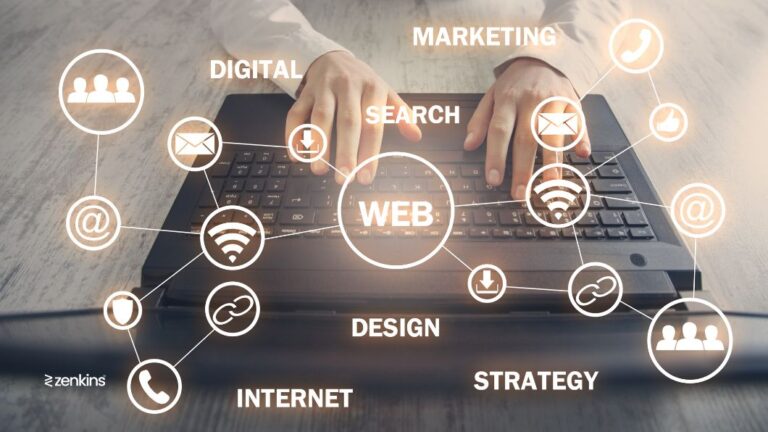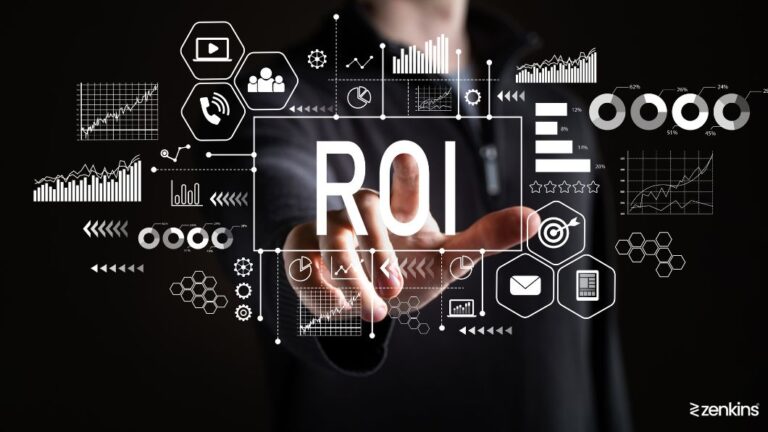Healthcare Analytics: Unlocking Insights for Better Decision-Making
Table of Contents
Healthcare organizations generate vast amounts of data every day, and the ability to effectively analyze and extract insights from this data has become crucial for making informed decisions. This is where healthcare analytics comes into play. By leveraging advanced analytical techniques and technologies, healthcare analytics provides a powerful tool for unlocking valuable insights that can drive improvements in patient care, operational efficiency, and financial performance.
In this article, we will explore the importance of healthcare analytics, its key applications, the challenges in its implementation, best practices for utilization, its impact on decision-making, and the future trends that are shaping this rapidly evolving field. By harnessing the power of healthcare analytics, organizations can make data-driven decisions that lead to better outcomes and ultimately, a healthier population.
Introduction to Healthcare Analytics
What is Healthcare Analytics?
Healthcare analytics is like having a superpower that helps healthcare organizations make better decisions. By analyzing vast amounts of data, healthcare analytics provides valuable insights that can improve patient care, streamline operations, and boost financial performance. It’s like having a crystal ball, but instead of predicting the future, it reveals patterns, trends, and correlations in data.
Evolution of Healthcare Analytics
Healthcare analytics has come a long way from scribbling notes on parchment scrolls. Once upon a time, healthcare decisions were made based on intuition and guesswork. But with the advent of technology, we can now crunch numbers and analyze data to make informed decisions. From simple spreadsheets to sophisticated algorithms, healthcare analytics has evolved into a powerful tool that helps us navigate the complex healthcare landscape.
Importance of Data Analytics in Healthcare
Enhancing Patient Care and Outcomes
Data analytics in healthcare isn’t just about geeking out over numbers; it’s about improving patient care and outcomes. By analyzing patient data, healthcare providers can identify patterns and trends that can lead to early disease detection, personalized treatment plans, and better patient outcomes. It’s like having a Sherlock Holmes for healthcare, solving mysteries, and saving lives.
Optimizing Operational Efficiency
Let’s be honest – running a healthcare organization is no walk in the park. But with data analytics, you can streamline operations, reduce costs, and improve efficiency. By analyzing data on patient flow, resource allocation, and process optimization, healthcare organizations can identify bottlenecks and make data-driven decisions to enhance operational efficiency. It’s like having a personal efficiency guru, making sure everything runs smoothly.
Improving Financial Performance
Money makes the world go round, and the same goes for healthcare. With the help of data analytics, healthcare organizations can optimize revenue cycles, detect fraud, and manage costs effectively. By analyzing financial data, healthcare organizations can uncover hidden opportunities and identify areas for improvement. It’s like having a financial advisor for your healthcare organization, helping you make smart financial decisions.
Key Applications of Data analytics in healthcare
Predictive Analytics for Disease Prevention
Wouldn’t it be nice if we could predict the future? Well, with predictive analytics in healthcare, we can do just that (sort of). By analyzing patient data and historical trends, healthcare organizations can identify individuals at risk of certain diseases and take preventive measures. It’s like having a crystal ball that helps us prevent diseases before they even happen.
Real-Time Monitoring and Intervention
Time is of the essence in healthcare, and real-time monitoring and intervention can make all the difference. With the help of data analytics, healthcare providers can monitor patients in real time, detect anomalies, and intervene promptly. It’s like having a superhero cape that helps us swoop in and save the day when patients need us the most.
Population Health Management
Taking care of an entire population’s health is no easy task, but with population health management and data analytics, it becomes more manageable. By analyzing population-level data, healthcare organizations can identify trends, target interventions, and improve overall health outcomes. It’s like being the conductor of a symphony, ensuring that everyone’s health is in harmony.
Challenges in Implementing Data analytics in healthcare
Data Quality and Integration
Like a puzzle with missing pieces, data quality, and integration can be a challenge in healthcare analytics. With data coming from various sources and in different formats, ensuring its accuracy and integrating it effectively can be a daunting task. It’s like trying to untangle headphones in your pocket – frustrating but necessary.
Privacy and Security Concerns
Privacy and security are like the bodyguards of healthcare data, protecting it from unauthorized access and breaches. Healthcare organizations must navigate the complex landscape of regulations and implement robust security measures to ensure patient privacy and data security. It’s like guarding a treasure chest – only those with the right key should have access.
Limited Analytical Skills and Resources
Analytics may sound fancy, but it requires skilled individuals and adequate resources to make it work. With a shortage of analytical skills and limited resources, healthcare organizations face hurdles in implementing effective healthcare analytics programs. It’s like hosting a cooking show with no chef – you need the right skills and ingredients to make a delicious data dish.
Best Practices for Utilizing Healthcare Analytics
Defining Clear Goals and Objectives
When it comes to data analytics in healthcare, it’s crucial to have a clear idea of what you want to achieve. Are you looking to improve patient outcomes, streamline operations, or reduce costs? Defining your goals and objectives will help guide your analytics efforts and ensure you’re focusing on the right areas.
Establishing Robust Data Governance
Data is at the heart of healthcare analytics, so it’s essential to have strong data governance in place. This means establishing clear data standards, ensuring data quality and integrity, and implementing security measures to protect patient privacy. By having robust data governance, you can trust that the insights derived from your analytics efforts are accurate and reliable.
Investing in Advanced Analytical Tools
To unlock the true potential of data analytics in healthcare, it’s essential to invest in advanced analytical tools. These tools can help you process large volumes of data, identify patterns and trends, and generate actionable insights. Whether it’s machine learning algorithms or predictive modeling, having the right tools in your analytics toolkit can make a world of difference in driving better decision-making.
Impact of Healthcare Analytics on Decision-Making
Data-Driven Clinical Decision-Making
Data analytics in healthcare can revolutionize clinical decision-making by providing clinicians with evidence-based insights. By analyzing patient data and medical research, healthcare professionals can make informed decisions about diagnosis, treatment plans, and interventions. This data-driven approach can lead to improved patient outcomes and more personalized care.
Operational Decision-Making and Resource Allocation
Analytics can also have a significant impact on operational decision-making within healthcare organizations. By analyzing data on resource allocation, staffing levels, and patient flow, administrators can optimize processes, reduce wait times, and make informed decisions about resource allocation. This can lead to improved efficiency, cost savings, and better overall patient experiences.
Future Trends in Healthcare Analytics
Artificial Intelligence and Machine Learning
Artificial intelligence and machine learning are poised to revolutionize healthcare analytics. These technologies can analyze vast amounts of data, identify patterns, and make predictions with unprecedented accuracy. From early disease detection to personalized treatment recommendations, AI and machine learning hold tremendous potential in transforming healthcare decision-making.
Integration of Wearable Devices and IoT
The integration of wearable devices and the Internet of Things (IoT) is another exciting trend in healthcare analytics. These devices can collect real-time data on patients’ health and activities, providing valuable insights for preventive care and chronic disease management. By leveraging data from wearable devices and IoT, healthcare providers can proactively intervene, monitor patients remotely, and deliver personalized interventions.
Conclusion: Harnessing the Power of Healthcare Analytics for Improved Outcomes
Healthcare analytics has the power to revolutionize decision-making in the healthcare industry. By defining clear goals, establishing data governance, investing in advanced tools, and leveraging data-driven insights, healthcare organizations can enhance clinical decision-making, improve operational efficiency, and ultimately improve patient outcomes.
As technology continues to advance, the future of healthcare analytics holds even greater promise, with AI, machine learning, and the integration of wearable devices expected to drive further advancements. So, let’s embrace the power of analytics and unlock the insights that will shape the future of healthcare. After all, it’s time to make data our best friend in the quest for better healthcare!
In conclusion, healthcare analytics has emerged as a game-changer in the healthcare industry, offering immense potential for improving decision-making and driving positive outcomes. By leveraging the power of data analytics, healthcare organizations can gain valuable insights into patient care, operational efficiency, and financial performance.
However, implementing healthcare analytics comes with its challenges, requiring robust data governance, skilled resources, and a commitment to privacy and security. By adopting best practices and staying abreast of future trends, healthcare organizations can unlock the full potential of healthcare analytics and pave the way for a more data-driven and efficient healthcare ecosystem. Ultimately, the use of healthcare analytics holds the key to transforming healthcare delivery and improving the well-being of individuals and communities.
FAQ
What is healthcare analytics and why is it important?
Healthcare analytics refers to the use of advanced analytical techniques and technologies to analyze healthcare data and derive meaningful insights. It is important because it enables healthcare organizations to make data-driven decisions, improve patient care and outcomes, optimize operational efficiency, and enhance financial performance.
What are some key applications of healthcare analytics?
Healthcare analytics finds applications in various areas such as predictive analytics for disease prevention, real-time monitoring and intervention, population health management, healthcare resource allocation, and fraud detection. These applications help in improving patient care, identifying trends, and optimizing resource utilization.
What are the challenges in implementing healthcare analytics?
Implementing healthcare analytics can come with challenges such as ensuring data quality and integration from disparate sources, addressing privacy and security concerns to protect patient information, and overcoming limited analytical skills and resources within healthcare organizations. These challenges require careful planning and investment in the right infrastructure and expertise.
What are some future trends in healthcare analytics?
Future trends in healthcare analytics include the integration of artificial intelligence and machine learning for advanced data analysis, leveraging wearable devices and the Internet of Things (IoT) to gather real-time patient data, and the use of predictive analytics to identify patterns and proactively manage population health. These trends have the potential to revolutionize healthcare delivery and improve patient outcomes.




